In the relentless pursuit of decarbonisation, the Government handed its own departmental fleets the toughest challenge of all: become 100% zero emission for all cars and vans by 2027.
With the deadline looming large, it is no surprise that Defra, whose fleet of 3,000 cars and 2,000 vans primarily sit within the Environment Agency, is in the vanguard of the transition.
Led by director of group fleet services Dale Eynon, the Defra fleet began its electric vehicle transition back in 2011 when the Environment Agency took on its first full electric car, the Mitsubishi i-Miev. Today, just over half of the EA’s fleet of 2,500 cars are full electric (1,289 to be precise), while 214 of its 1,562 vans are also zero emission.
Concurrent with the electrification strategy is a move to dramatically downsize the Environment Agency car fleet to around 2,000. Over the past three years, 1,500 cars have been carved out; another 500 will be removed by the end of the year, achieving its 2k target six years ahead of plan.
Under-utilised cars were already being off-loaded as far back as 2000. A subsequent mileage analysis following the Covid ‘work from home’ directives and the onset of virtual meetings revealed just how few miles many vehicles were travelling.
Budget pressures aligned with rising costs meant that the fleet would always be closely scrutinised.
“The policy was set in April 2022 and most of the tough stuff has been done,” Eynon said. “Many of our field-based staff are now using rental and pool cars instead of company cars.”
The key eligibility metric is a minimum of two days use of the car per week; anything below is when rental becomes the cheaper option. There are, of course, some allowances for operational reasons, in particular speed of response to emergencies.
The review was completed in quarter one this year; the final 500 cars have already been identified with employees given six months’ notice. In total, the fleet reduction is estimated to save up to £4m a year.
No early termination charges
Some contracts have been ended early to meet the targets, but Defra has not been hit by early termination charges thanks to negotiations with its funding partner Novuna Vehicle Solutions.
Its managing director Jon Lawes told Fleet News: “We are relentless about achieving net zero and Defra is a halo customer for that. It was clear at tender – we went into it with our eyes open. It was worth the investment to minimise cost of the early terminations.”
Defra has returned to Novuna after a short period putting its SMR business through fleet management company Rivus. It parted company, said Eynon, because Rivus “couldn’t provide the service we contracted for”.
Even at the point of contract agreement with Rivus, Eynon shrewdly hedged his bets by asking Novuna to prepare an alternative plan as a back-up option. Within three months, that plan was enacted and all vehicles – cars to HGVs - were mapped across. It took just eight weeks to complete.
“We signed a 12-month contract that allowed us to go back to market,” Eynon said. “The tender is out, and the plan is to have it in place by September/October this year.”
The double whammy of the transition to electric and the IRS16 accounting model, which since 2019 has required lessees to recognise assets and liabilities for all leases of more than 12 months, has persuaded Defra to trial contract purchase as a funding option, complementing its traditional outright purchase.
The initial test on 100 electric vans also enabled Defra to secure deals earlier with vehicle manufacturers at a time when availability was an issue. It wrote the contracts over three-year terms with an option to either buy back at the end or extend with a new lease.
“It’s been successful,” Eynon said. “IRS16 allows us to capitalise on this funding method and broaden our purchasing powers. But the market is now changing with supply increasing so we might continue to contract purchase but deal direct with the supplier through CCS .”
Transitioning vans to zero emission by 2025
Defra recently took on its 1,500th full electric vehicle, resulting in 35% of the fleet being zero emission. Never one to shirk a challenge, Eynon has imposed his own target to transition all vans to electric by 2025, two years ahead of the Government deadline.
He expects three-quarters of the car fleet to also be full electric by then as they wash through the four-year operating cycle.
The biggest hurdle will be the 800 4x4s, including pick-ups, due to a lack of full electric options.
“We held some of our vans back from replacement so we could change them more quickly when electric models became available, and we are now having to do the same with our 4x4 fleet,” Eynon said.
“We could source some used ones to plug the gap until 2026 when we expect to see more electric options come to market – this is a cheaper option for the public purse.”
He added: “Treasury won’t give us any more money for our electric transition, so we have to manage it within our existing budgets.”
Despite the progress made to date, Eynon concedes there are still complications which put a lot of fleets off starting the transition, including the cost and simplicity of charging. Defra has its own challenges due to changes in its working patterns post Covid.
Pre-Covid, around half of its van fleet returned to depot overnight; now it’s just 20%. Consequently, Defra’s workplace charging strategy is evolving to encompass more fast chargers across its 120 depots.
“We want more people to be home-based and live in the patch that they operate because it is more efficient than coming to the depot to collect a van every day. But it does mean we now have a lot of vehicles at the depot in the morning that need a quick charge and less overnight, so we have to be able to meet the changing charging requirement,” Eynon said.
“We are now in phase five of our workplace charging plan. We have 250-300 chargers, most of which are 7-22kW, and are installing 200 more with 50-60 at 50kW and the rest 7-22kW.”
The EV charging hierarchy
It will also prompt a reassessment of the charging hierarchy. The current order priorities vans, then pool cars, followed by operational leased company cars and, finally, office commuters.
However, plug-in hybrids now to be factored in and the system needs an upgrade to tackle people overstaying their time slot.
“Now it is paper based, but if you book a slot and someone is in it, you have to go and find them,” Eynon said. “We want an intelligent text-based system to encourage people to move their vehicle when they have reached a certain charging level. And at the moment the bookings are for half a day, but we want PHEVs to have one-hour slots.”
The charging infrastructure also ties in the fleet strategy with the property strategy, which is migrating to fewer but bigger ‘super-hub’ sites. Fleet has a key role to play in ensuring the facilities are fit for purpose, as well as considering the wider implications and opportunities of workplace chargers.
Eynon explained: “We are in rural areas, so do we build infrastructure that we share with the public? There are some challenging practicalities, including security issues to overcome, but we see it as a possible solution.”
He is also involved in the trial and roll out of solar and battery storage solutions with some sites already installing solar panels. The case is made building-by-building, rather than a blanket diktat, based on usage, but the main use of the solar energy is to power the actual building rather than the vehicles.
Logistics issues, expensive technology, energy supplier agreements and countering concerns by some manufacturers makes this “a hard one to crack”, Eynon said. “It’s not there on a commercial scale,” he added.
The charging strategy expands beyond workplace, though, partly due to range limitations.
For example, Defra’s Vauxhall Combos are typically achieving 120 miles of range against a WLTP figure of 175 which puts many of the organisation’s daily activities at the limits of the electric van’s capabilities.
“We are looking at options such as home chargers, juice boosters and powerbanks, as well as driver training to ensure they get the most out of the vehicles,” Eynon said. “We are also looking at their routes for solutions. There is also public charging, but we try to minimise that due to both the cost and the impact on productivity from charging during the day.”
The solution for car drivers is easier: they can either self-fund and fit a home charger themselves or go via Novuna and repay the cost over the four-year lease.
Dual rate EV reimbursement
Reimbursement is likely to follow a dual rate approach for home and public charging; Defra is in the final stages of attaining approval after getting the green light from HMRC.
It proposes tracking public charging reimbursement rates against the RAC price watch which provides a monthly figure based on the average from a basket of public chargers and across a range of vehicles.
Reduction in the fleet size combined with changing working patterns and the electric transition is also helping Defra to make giant strides towards achieving its goal of cutting annual emissions by “a minimum” of 45% by 2030, against a 2020 baseline.
“This includes plant and boat as well which are more challenging, but we are already at 40% reduction,” said Eynon.
Car emissions are averaging 38g/km – they have more than halved in the past two years; vans are at 143.5g/km.
A new usership-based fleet optimisation programme is about to be launched which will look to further accelerate cost and emissions savings, while boosting utilisation of assets. The principle is to own less by sharing more and applies to both vehicles and plant.
It requires greater integration with the hire market, pool cars and car clubs, and critical data analysis for Eynon to identify “the sweet spot”.
He explained: “It is no longer one person, one vehicle. We need to improve utilisation by sharing more across Defra and, ultimately, the entire Government. It is a challenge, especially getting better data insights on where we are spending our money, and we need to take into account our rapid response obligations.
“This will be a two-year programme and the first part is data. We will build our own data warehouse facility with feeds from our suppliers – SMR, lease, fines, hire, insurance premiums etc. - which turn into actions. We actually want less data and more intelligence.”
Supplier feeds are part of the value-added service that Defra expects from all its partners. Contract performance is closely monitored against a set of indicators, supported by data.
Costs are rising across the board, but the CCS framework helps with favourable terms for volume orders. But, while it carries out regular benchmarking, Defra doesn’t screw suppliers too tightly on price.
“We want an open book partnership; we understand they have to make profit and cover their costs,” Eynon said. “But we don’t want hidden costs. Each contract is different, and some are more transactional, but we push hard for quality.”
Ultimately, the fleet optimisation programme, with support from supplier partners, will underpin Defra’s fleet strategy.
“We have to reduce cost and we have to radically reform to be able to afford the fleet transition and run an efficient operation,” Eynon said.



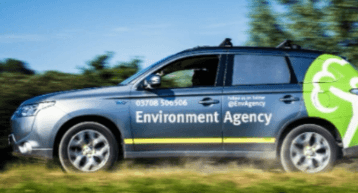




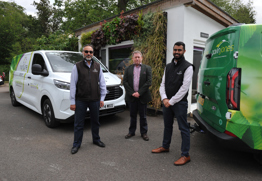

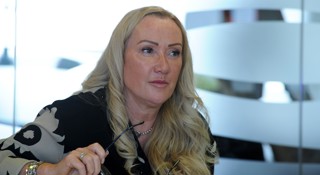
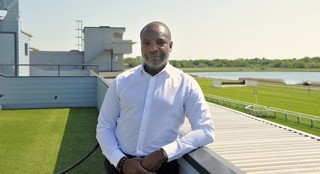
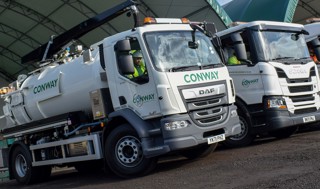











Login to comment
Comments
No comments have been made yet.